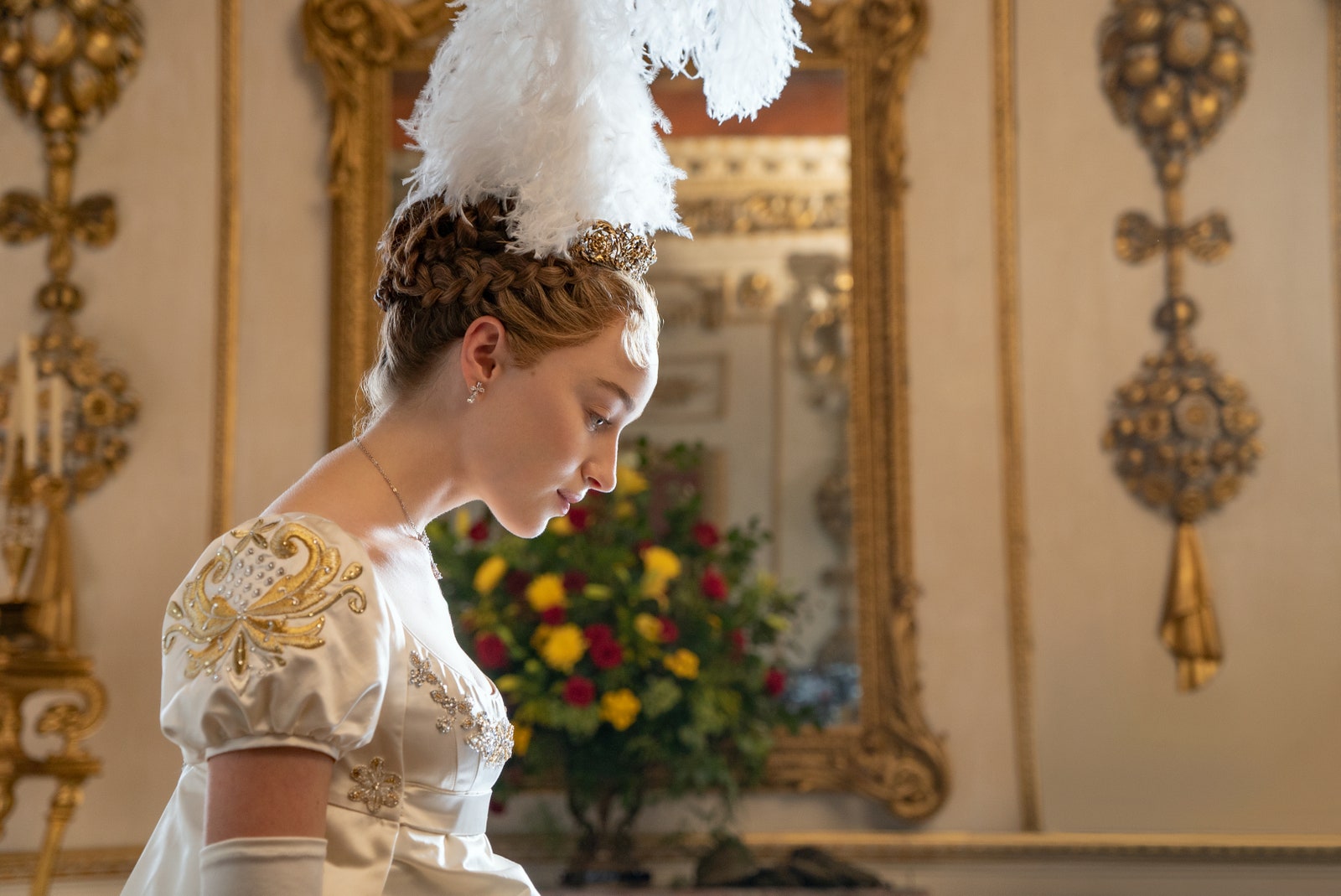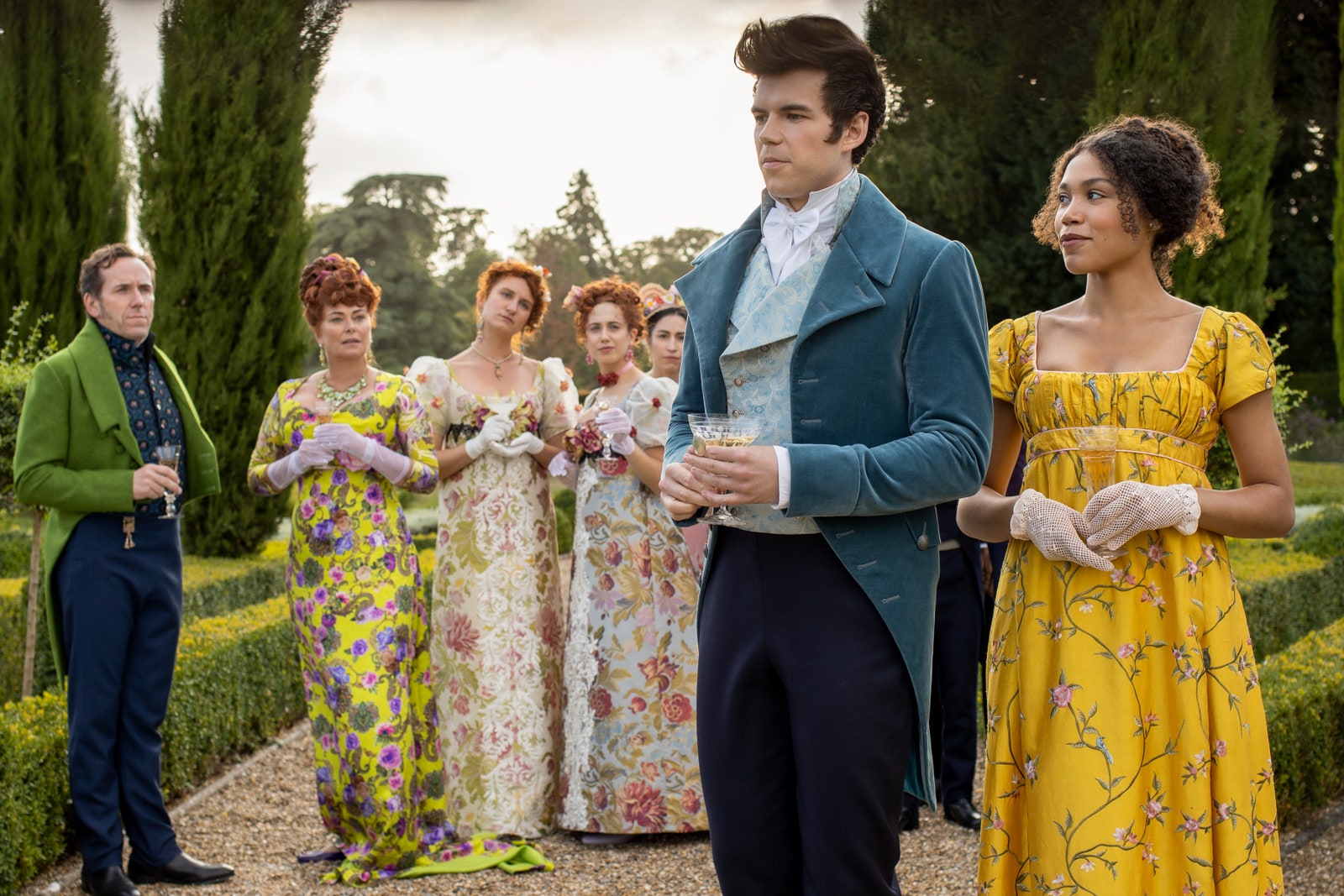Created by Chris Van Dusen, executive produced by TV legend Shonda Rhimes, and adapted from Julia Quinn’s bestselling Bridgerton novels, the eight-part series opens in 19th-century London. At its centre is Daphne (Phoebe Dynevor), the eldest daughter of the respected Bridgerton family, who’s set to be presented to the Queen (Golda Rosheuvel) and enter the marriage market. Joining her are the daughters of her hapless neighbor, Portia Featherington (Polly Walker), but when they fail to attract suitors and Daphne catches the eye of a duke (Regé-Jean Page), the claws come out.
For a show packed with bar-room brawls and secret assignations, bonnets and figure-swamping sacks would never do. Instead, every character is dripping in jewels, feathers and finery, hellbent on outshining one another. There are silk gowns rendered in ice-cream pastels, acid-bright florals, acres of ruffles, rhinestone-encrusted puff sleeves and wigs that could rival Marie Antoinette’s.
The person responsible for these flamboyant outfits is 71-year-old New York native Ellen Mirojnick, the prolific costume designer behind cult hits such as Fatal Attraction (1987), Wall Street (1987), and Basic Instinct (1992). In 2013, she took home an Emmy for her work on Steven Soderbergh’s glitzy Liberace biopic Behind the Candelabra and followed up with spectacular creations in The Greatest Showman (2017) and Maleficent: Mistress of Evil (2019). With Bridgerton, she outdoes herself again, transforming familiar Regency-era silhouettes into something fresh and fantastical.








